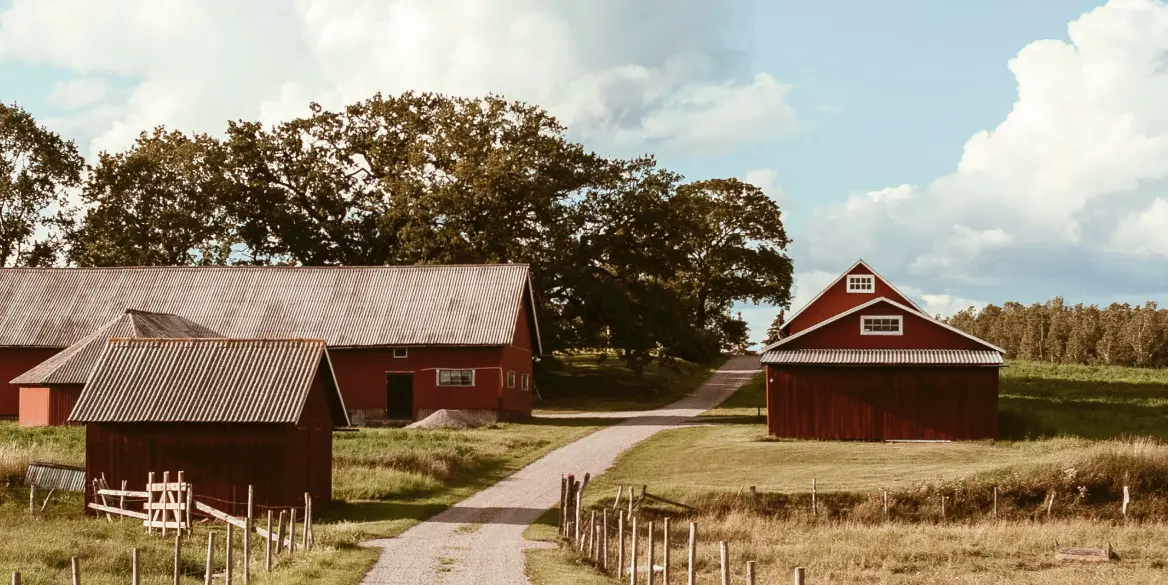
TL;DR
-
Rural coworking spaces are growing as remote workers seek community, affordability, and a lifestyle outside major cities.
-
They bring local economic benefits but face challenges like smaller populations, home office alternatives, and limited awareness.
-
Success comes from community-building, destination amenities, local partnerships, and tech automation to streamline operations.
The first coworking space in North America opened in San Francisco in 2005.
Since then, tens of thousands of coworking spaces have opened in bustling city centers around the world including London, New York City, Berlin, and more.
From the beginning, coworking spaces have largely been confined to big cities. However, there is a new trend emerging in recent years – coworking in rural communities.
In this article, we’ll explore the rural coworking trend including what it is, why it’s becoming popular, and how to make a coworking space successful in a rural community.
- What is rural coworking?
- Why are coworking spaces becoming more popular in rural areas?
- How do people working in rural areas benefit from coworking spaces?
- How do coworking spaces benefit rural communities?
- What are the benefits of opening a coworking space in a rural area?
- What are the potential downsides of opening a coworking space in a rural community?
- What are some examples of rural coworking spaces?
- What are some things to keep in mind when opening a coworking space in a rural area?
- What is the best technology to run a rural coworking space?
Automate your rural coworking space with Optix

Why are coworking spaces becoming more popular in rural areas?
Coworking in rural communities is becoming more popular for a few reasons.
- More people are working remotely: today there are more remote workers in every part of the world, including rural areas. This demographic is particularly drawn to coworking spaces and is largely responsible for the growth of coworking post-COVID
- More people are moving outside of cities: because people are no longer required to live where they work, there’s been an uptick in the population of rural areas according to allwork.space leading to a rise in coworking spaces in these communities
- Rise of “destination coworking”: people are taking workations or seeking out destination coworking spaces wherein people travel to a new place to work according to Business Chief
This growing trend presents a great opportunity, both to coworkers and coworking operators, to bring the coworking movement to new, undiscovered areas of the world.

How do people working in rural areas benefit from coworking spaces?
For those living in rural areas, coworking spaces can help:
- Improve mood and satisfaction
- Cultivate a sense of community
- Create new networking and business opportunities
To learn more about how rural coworking spaces can positively impact overall mood and satisfaction for coworkers, check out this great article published in Sage Journals earlier this year.
How do coworking spaces benefit rural communities?
Coworking spaces benefit rural communities by serving as economic development hubs.
In a recent Coworking Canada Unconference conversation on rural coworking, panelists discussed the role that their coworking spaces were having on rural communities. One overwhelming consensus was that in small communities, coworking spaces quickly evolve into hubs for economic development.
They often work closely with local governments to lead initiatives for their community, serving as hubs of incubation for start-up businesses and gathering spaces for other important community initiatives.

What are the benefits of opening a coworking space in a rural area?
If you’re a coworking owner or operator, you may want to consider starting a coworking space in a rural community. Some of the benefits you can expect include:
- Lower cost of rent: the cost of rent tends to be less in rural areas compared to urban or metropolitan cities
- Less competition: a lot of the time if you’re considering opening a coworking space in a rural community, you are the first coworking space there, reducing the potential for competition
- Opportunity to make a significant impact on a community: in rural communities, the impact of a single coworking space can be massive for economic development and growth
Not only is opening a rural coworking space a great business opportunity, it’s a wonderful way of supporting your community. Of course, there are some challenges to consider.
What are the potential downsides of opening a coworking space in a rural community?
Rural coworking spaces do not come without their challenges however. Here are some of the most common challenges faced by those who open coworking spaces in rural areas:
- The concept of coworking may be less known: depending on where you’re located, it’s possible that coworking may be a lesser known concept. This creates a need for education, and can make it more difficult to acquire members.
- People are more likely to live in larger homes with home offices: those who live in rural communities are likely to have more space in their house to work, including a home office. They may not be as attracted to the idea of “getting out of your house” to work somewhere else.
- Less potential members: there are only so many people you can attract to work in your space in a small town. If you aren’t in a large tourist area, then you may find attracting members to be a challenge.
There are many challenges to operating in more remote parts of the world. Therefore, it’s important to do your research and create a strong business plan before deciding to open a rural coworking space.

What are some examples of rural coworking spaces?
With all that being said, there are many coworking spaces providing an exceptional experience to their members, no matter where they’re located.
Here are two Optix clients who are serving their rural coworking communities.
OfficeLinx
Port Hope, Ontario, Canada
OfficeLinx is a coworking space in Port Hope, ON, a small town in Canada with around 16,000 people.
They offer a professional atmosphere and a heap of amenities to support their growing membership base including 24-hour access, a cafe, and an on-site childcare facility affectionately known as “Kinderlinx”.
align.Space
West Chester, Pennsylvania, USA
align.Space is a coworking space located in a small town of about 18,000 people. They market themselves as a business club, and offer delightful perks to their members including complimentary hot breakfast every weekday.
They also offer 2,200 square feet of event space to rent, which is a great way to drive revenue in the absence of lots of members.

What are some things to keep in mind when opening a coworking space in a rural area?
If you’re considering opening a coworking space in a less populated area of the world, here are a few things to keep in mind.
1. You may need to educate people on what coworking is
When speaking with Megan Cyphers, Founder at rural coworking space Locally Known Cowork, one of the biggest challenges was around needing to explain to people what coworking was.
Consider how you’ll educate others on coworking, including the benefits of it for them and why it’s relevant to them in their lives.
“Usually the first question I ask people if they come in and are looking around is, ‘Are you familiar with how a coworking space works?’ A lot of them will say no. So I think the challenge has been the entire idea of what a coworking space is versus, like, a coffee shop.”Megan Cyphers, Founder at Locally Known Cowork
2. Consider making your space a “destination coworking space” to drive more revenue
One potential solution for the low critical mass of small towns is to sell your coworking space as a trip in and of itself. You can make your space a destination by:
- Offering rooms or bungalows for people to stay the night (not to be confused with co-living!)
- Incorporating a cafe and restaurant on-site
- Making a large number of amenities available like a gym, on-site childcare, group activities, and more
In order to be successful in creating a destination coworking space, you’ll need to think of your space as less of a coworking space and more of a hotel or resort through a lens of hospitality.
If this sounds like a massive undertaking, then consider setting up exclusive partnerships with local hotels by offering hotel guests a discount on coworking for the day or week. This can help you acquire customers at a lower acquisition cost.
3.You’re competing with their kitchen table
Statistically, those who live in rural areas are more likely to live in a single detached home, rather than a condo or apartment. This means they’re more likely to have larger spaces and home offices available to them, and thus may be less inclined to work outside of their home.
This is where selling the benefits of your coworking space becomes extremely important. These benefits could be anything from:
- Increased productivity
- Networking opportunities
- Access to amenities
- Ease of focus
One of the greatest benefits you can sell to coworkers? The community.
4. Think about how you will create community
As mentioned, community becomes especially important in rural areas, as it serves as one of the primary benefits of joining a coworking space.
Therefore, it’s important to put a lot of thought into how you will begin to build community in your space, and how you will sell the benefits of this community to prospective members.
Community building is an art in coworking spaces. You can hold monthly happy hours for members, bring in keynote speakers, or hold networking events or lunch & learns to aid in professional development (these nine coworking leaders have some great advice for building community).
There are also opportunities to use technology to build a community before you open your coworking space. Whatever you do, don’t forget to drive home the value that a strong coworking community can bring to your members
5. Public support is essential
Getting public support of initiatives in small towns is crucial to success. The notion that “everybody knows everybody” tends to ring truer in areas that are more sparsely populated, so it’s important to make a positive impression and garner the support of everyone around you from the get-go.
Some ways to begin relationship building, especially if you’re new to the area, can be:
- Introducing yourself to local businesses and offering free trials to your coworking space
- Setting up mutually beneficial partnerships with local businesses to offer to your members (and their customers)
- Attending local community events
- Speaking at a public hearing with local government
Becoming involved in the community and showing how coworking can benefit everyone is a great way to get people on board with your business and acquire new members in the future.

What is the best technology to run a rural coworking space?
Creating a profitable coworking space in a rural community means being mindful of your finances and operating with efficiency in mind.
One of the most effective ways of reducing your overhead and improving your operational efficiency is through automating as much as you possibly can and creating an autonomous coworking space with the help of coworking space automation software.
With the help of technology, you can automate:
It’s possible to run an entirely autonomous space, one where you don’t have to be present in the physical space, through automating things like member management, access control, and more.
Learn how Optix can help you automate your coworking space and work remotely.
Why automation matters in rural coworking spaces
Rural coworking spaces often run lean, with fewer staff, smaller populations, and members who need more flexibility. Optix Automations helps operators overcome these challenges by automating operations, engaging the community, and enabling growth.
Cost efficiency with fewer staff
In rural coworking, hiring a large team isn’t always possible. With Optix Automations, repetitive tasks like onboarding, billing, and allowance management run in the background, freeing staff to focus on building community and supporting members.
Extending access and flexibility
Many rural members need evening or weekend access. Automations make it possible to grant and manage access without a staff member on-site, keeping the space open longer and more conveniently for members.
Enhancing member experience
Automations ensure things like invoices, reminders, and booking confirmations happen seamlessly and on time. This consistency builds trust, reduces errors, and makes the coworking experience smoother—critical for communities where word of mouth drives growth.
Insights for better decision making
Usage data from Automations helps operators see which desks, rooms, or resources are in demand. With this knowledge, rural coworking operators can make smarter choices about pricing, scheduling, and where to invest next.
Optix Automations is the ultimate tool for helping you run your coworking space. Ready to get started?
Automate your rural coworking space with Optix

Frequently asked questions
A rural coworking space is a shared workspace located in a small town or less densely populated area, often outside of major urban centers. It serves professionals, remote workers, and visitors who prefer working in quieter settings surrounded by nature. Rural coworking differs from urban coworking in scale, infrastructure, and the types of communities it supports.
Coworking spaces are becoming more popular in rural areas because more people are working remotely, many are moving away from big cities, and there is growing interest in “destination coworking,” where people combine work with travel experiences. These trends make rural coworking increasingly viable and attractive.
Workers in rural areas benefit from coworking through improved job satisfaction, more opportunities to connect with others, and a stronger sense of community. A rural coworking space also helps reduce the isolation that can come from working alone at home.
Rural coworking spaces often act as hubs for economic development. They can incubate local businesses, create gathering spaces for events, partner with local governments, and help attract or retain talent. This makes coworking a valuable driver of both community and economic growth.
Opening a coworking space in a rural area has advantages such as lower property costs, less competition, and the opportunity to make a significant impact in the community. Because many rural regions lack flexible workspace options, a new space can quickly become an essential local hub.



